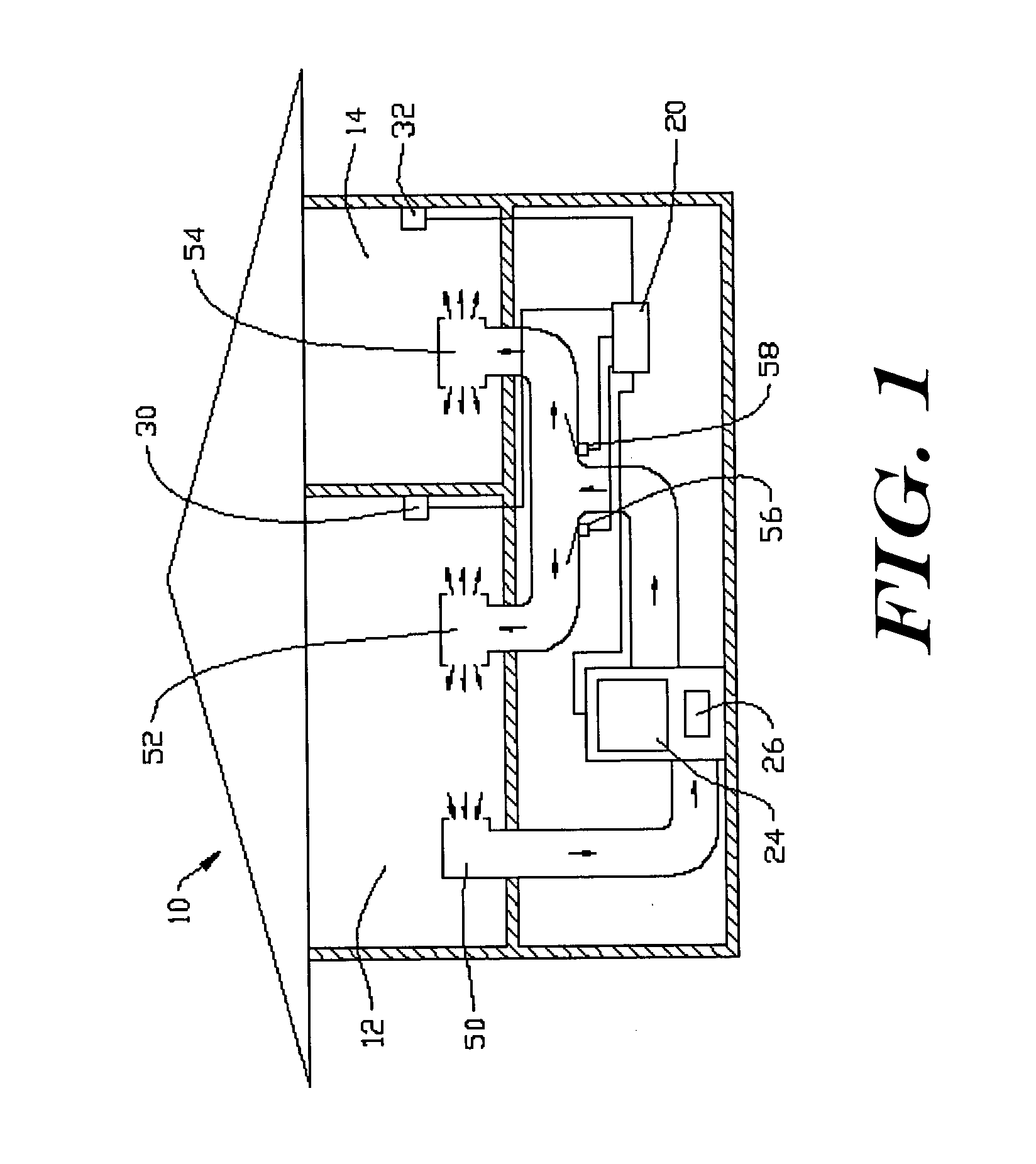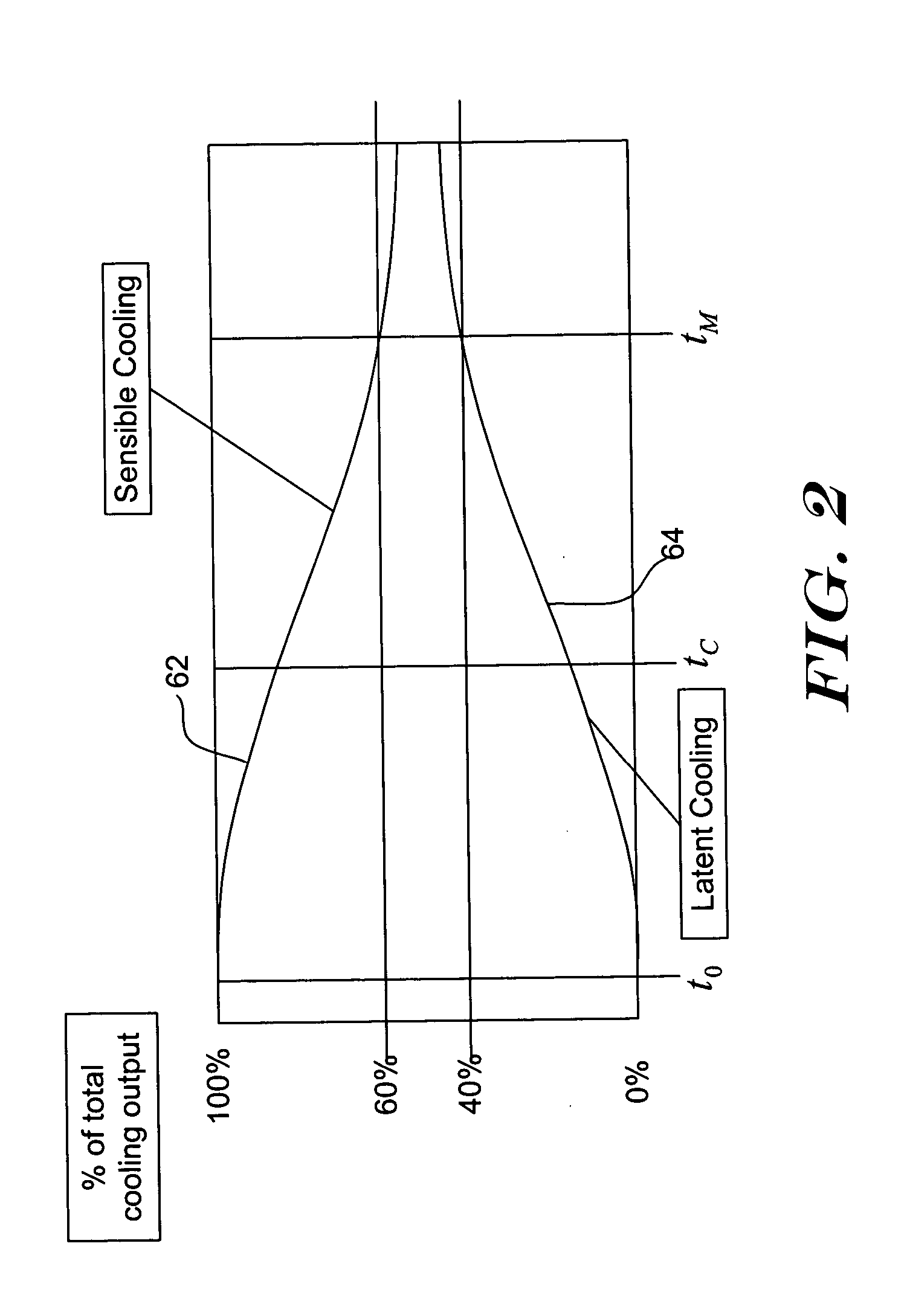Method and apparatus for controlling humidity with an air conditioner
a technology of air conditioner and humidity, applied in the field of methods, can solve the problems of reducing removing water from the air, and large cooling capacity of the air conditioner, and achieve the effect of effectively managing the humidity of the inside spa
- Summary
- Abstract
- Description
- Claims
- Application Information
AI Technical Summary
Benefits of technology
Problems solved by technology
Method used
Image
Examples
Embodiment Construction
The following detailed description should be read with reference to the drawings. The drawings, which are not necessarily to scale, depict illustrative embodiments and are not intended to limit the scope of the invention.
FIG. 1 shows a highly diagrammatic schematic view of an HVAC system adapted to control an inside space of a building or other structure. In the illustrative embodiment, the HVAC system is used to control the temperature, humidity and / or other environmental parameters in the inside space 10, in which a first zone 12 and a second zone 14 have been defined. While a multi-zoned HVAC system is shown, it is contemplated that a single-zoned HVAC system can also be used, if desired.
The illustrative HVAC system includes a controller 20 which controls a HVAC unit 24 and a fan or blower 26. The HVAC unit 24 may include an air conditioner, which may have parts outside of the inside space 10. In some embodiments, the air conditioner has a compressor and heat exchanger outsid...
PUM
 Login to View More
Login to View More Abstract
Description
Claims
Application Information
 Login to View More
Login to View More - R&D
- Intellectual Property
- Life Sciences
- Materials
- Tech Scout
- Unparalleled Data Quality
- Higher Quality Content
- 60% Fewer Hallucinations
Browse by: Latest US Patents, China's latest patents, Technical Efficacy Thesaurus, Application Domain, Technology Topic, Popular Technical Reports.
© 2025 PatSnap. All rights reserved.Legal|Privacy policy|Modern Slavery Act Transparency Statement|Sitemap|About US| Contact US: help@patsnap.com



